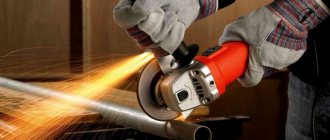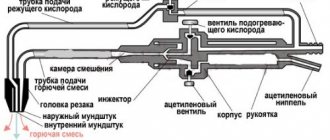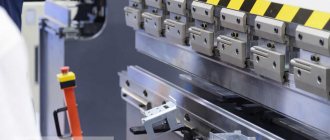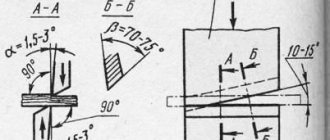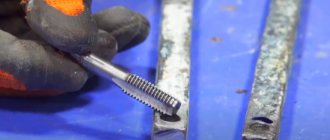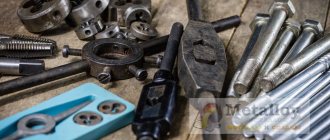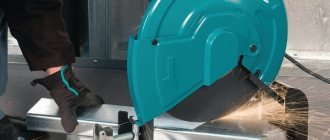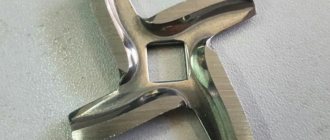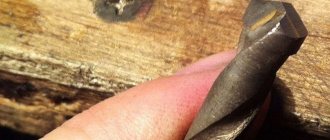Types of hydraulic shears
Depending on the work performed, hydraulic shears are divided into several types:
- hydraulic shears for primary destruction (hydraulic shears for dismantling, or crushers) carry out the demolition of buildings and structures, dismantling structures, breaking reinforcement and welded connections;
- hydraulic shears for concrete (concrete breakers, hydraulic shears for recycling) are used for grinding reinforced concrete debris and floors remaining after the initial destruction;
- hydraulic shears for metal, used for cutting metal structures (beams, profiles, rods, cables) and separating connected metal elements;
- hydraulic pruning shears for trees, or hydraulic shears for trees;
- Rail breakers are specialized equipment for cutting rail structures.
It is worth mentioning separately about multiprocessors. These are universal hydraulic shears with quick-release jaws that allow you to change jaws depending on the tasks at the site. Thus, multiprocessors become the ideal solution for any type of dismantling: from primary demolition and destruction of concrete to cutting reinforcement and metal.
Video: Hammer DSP-30 hydraulic shears
Specifications
Technical parameters of scissors:
- blade hardness on the HRC scale corresponds to 50–62;
- temperature range at which the tool is allowed to operate is from -150C to +500C;
- hydraulic fluid - multigrade oil;
- Blade material: chrome-molybdenum or carbon steel;
- shear force - up to 70 tons, depending on the type of scissors;
- dimensions and weight depend on the specific model;
- maximum number of cuts - up to 3000 times;
- service life - 4 years.
Model of hydraulic metal shears
Device and design
Hydraulic shears have a body and jaws (or, as they are also called, cutting-breaking parts) are attached to it. The jaws are driven by one or two hydraulic cylinders. The number of hydraulic cylinders depends on the shear model. Hydraulic shears with two hydraulic cylinders have a higher destruction efficiency, since in this case the jaws act on the material being destroyed from both sides.
The jaws, in turn, have two parts - destructive and cutting. This makes it possible to carry out all dismantling operations in a single technological cycle.
The cutting elements of the hydraulic shears are removable, which makes it easy to replace them in case of wear.
Drawing and diagram of hydraulic shears
Design and principle of operation
The design of manual hydraulic shears for cutting metal resembles ordinary scissors, but differs somewhat from them in that, in the usual model, we transfer mechanical force from the hand directly to the cutting unit. Here our mechanical force is converted into hydraulic force, and only then is it supplied to the cutting blades. With the handle we pump the pump which creates pressure as a result of which the scissors move and actually cut.
Basic principles of the device:
Device of manual hydraulic shears
- Execution of the cutting part. The two main ones are open edge and guillotine. Both are shown in the picture. The edge cutter is used for cutting metal sheets, and the guillotine cutter is used for cutting wires and cable bundles.
- Functions of the cutting part. There are units in which the cutting part rotates relative to the drive and handles, which makes the scissors more practical to use.
- Dimensions. The device has very large dimensions; this is due to the fact that it is equipped with a hydraulic drive; its installation is carried out on a fixed handle of hydraulic shears. The dimensions of the unit are directly proportional to the length of the hydraulic drive rod.
- Pressure supply. It also has 2 types of configuration. The first is a built-in plunger pump, which is powered by the operator's muscular strength. Second, this is an external compressor station.
What kind of oil is used in hydraulic shears?
Most often, the manufacturer requires the use of hydraulic oil and lubricants having the following characteristics:
- Hydraulic oil HLP46, meeting DIN 51524 Part 2 / ISO VG 46.
- An alternative is HEES biodegradable hydraulic oil in accordance with ISO 15380 or OECD 301 B.
- A general purpose grease EP2 in accordance with DIN 51825 - KP2K-20 / ISO L-XBCHB 2 is also required.
Never mix different types of hydraulic fluids. If you are in doubt about the performance of the hydraulic oil or grease, replace it completely. The percentage of unsuitable oil (especially when it comes to mineral oil) should not exceed 2%.
Possible faults
- The required pressure is not created in the tool.
- You may have insufficient oil in the tool and need to top it up;
- The hydraulic system is clogged, the oil should be changed;
- The pressure release lever is not closed; therefore, it should be closed;
- The rod does not return to its initial position.
- The return system is worn out and the return spring will need to be replaced;
- Oil leaks
- The seals have become unusable and should be replaced
The best metal nibblers
Nibblers differ from other types in their ability to cut not a thin line, but a wide strip in one pass. The device cuts material along two lines at once, forming a passage with a width of 1 to 3 mm. In addition, the knives have equipment for breaking chips and removing them, which immediately forms a ready-made hole for installation. Such models from the rating are useful for creating various grooves and cutouts in metal used when installing slopes, ebbs or electrical panels.
KNIPEX KN-9055280
Rating: 4.9
In this rating category, we have identified only one high-quality model from a German manufacturer. The Knipex company has equipped the scissors with double knives that allow you to cut metal with a thickness of 1.2 mm. It will be possible to cut a groove in plastic even with a workpiece thickness of 2 mm. The drive and working part are made of chrome-vanadium alloy, which is not subject to corrosion. On the nose, the manufacturer placed a chipbreaker in the form of a bracket with a protrusion, which ensures a clean cut without additional processing of the edges. The maximum grip width for the model is 2.7 mm. The tool steel was oil-hardened to maintain its edge longer.
Our experts liked the nibblers for their quality and long service life, for which they were included in the rating of the best. With this model, cutting through metal and breaking chips is carried out in one click, which reduces the number of manipulations with the workpiece and does not require further processing. The blades in the model are replaceable, so after their service life is exhausted, you will not have to buy a new tool, but only accessories for it.
Advantages
- trusted manufacturer;
- two-component handle;
- high stops that prevent the hand from slipping;
- built-in chipbreaker.
Flaws
- high price;
- you need to practice a lot on rough blanks to master the work;
- low performance.
Rating of the best metal scissors
| Nomination | place | Name of product | price |
| Best Shears for Sheet Metal Cutting | 1 | Hazet 1961R-1 | 8 658 ₽ |
| 2 | NWS 070-12-350 | 3 028 ₽ | |
| 3 | KRAFTOOL 2325-L | 1 029 ₽ | |
| 4 | Gross 78327 | 775 ₽ | |
| The best metal nibblers | 1 | KNIPEX KN-9055280 | 5 787 ₽ |
| Best lever shears | 1 | Enkor Korvet-568 | 3 2752 ₽ |
| The best hydraulic shears | 1 | KVT BRG-12 | 3 970 ₽ |
| The best rebar shears (bolt cutters) | 1 | KNIPEX KN-7182950 | 15 005 ₽ |
| 2 | STAYER 2330-090 900 mm | 1 520 ₽ | |
| 3 | Brigadir 23000 600 mm | 2 175 ₽ | |
| 4 | Enkor 27310 | 1 120 ₽ | |
| 5 | Zubr 23313-045 450 mm | 718 ₽ |
Operating rules
To extend the service life of the tool, it is important to follow the basic operating rules:
- the tool and cutting part must be kept clean;
- oil changes are carried out at least once every six months;
- Before storage, scissors should be cleaned and lubricated with an anti-corrosion compound;
- during operation, the thickness of the metal being cut should not exceed the standards stated by the manufacturer.
Possible faults
The main malfunctions of hydraulic tools for metal are:
- the rod does not return to the neutral position - the return spring must be replaced;
- no or insufficient oil pressure - requires changing the oil, closing the lever to relieve excess pressure or cleaning the hydraulic drive;
- There are oil smudges on the outside - the seals need to be replaced.
To avoid various breakdowns, you must follow the operating rules of the tool described in the technical data sheet. Before use, the tool must be checked for defects.
Best Shears for Sheet Metal Cutting
Products in this rating category are designed for cutting or trimming sheets of aluminum, galvanized steel or copper plates. Most often, this tool is used by tinsmiths or drywall workers. It is also actively used in the production of ventilation systems and drains.
Hazet 1961R-1
Rating: 4.9
The first place in our rating is occupied by a product from the German brand Hazet. The scissors are made of two metals, where the cutting part is made of high-carbon steel, and the drive is made of a stainless alloy. This design reliably protects the material from corrosion and extends its service life. The product is suitable for making straight and curved cuts. To prevent the hand from slipping off, high stops are provided. To prevent pinching of fingers, there is a stop on the drive.
Our experts rated the product as the best in several areas at once. Due to the thick jaws, the tool is capable of cutting through a section of ordinary metal up to 1.8 mm. It will also be possible to cut out reinforced sheet metal up to 1.2 mm thick. In addition to the power, users in the reviews like the ease of holding due to the thick handles. They evenly distribute the load when pressed. Another advantage of the product is high build quality and long service life. If handled correctly, they will withstand up to 10 years of active use.
Advantages
- compact length 26 cm;
- comfortable grip;
- serve up to 10 years;
- cuts through metal up to 1.8 mm.
Flaws
- there is no lock in the closed position (they can open on the belt and injure the body);
- high price;
- the coating of the handles is not dielectric;
- This model needs to be held in the left hand, which is inconvenient for right-handed people.
Tool selection rules
Criteria for choosing metal shears:
- tool power;
- scope of application;
- maximum thickness of the metal being cut;
- compactness, weight;
- degree of protection from negative environmental factors;
- manufacturer, cost of the model of interest;
- functionality - what kind of metal shearing press is used;
- design of the unit used.
Rules for choosing hacksaw blades:
- absence of damage, cracks, chips, or traces of rust on the surface;
- the strength of the material is higher than that of the metal being cut;
- the length is determined by markings or based on the design features of the scissors and their power;
- corrosion resistance;
- The shape of the teeth is selected based on the type of work being performed and the characteristics of the metal being cut.
Kinds
Metal scissors come in the following types:
- Cutting machines are high-power stationary equipment, the hydraulic drive of which is connected to a compressor. Allows you to perform all types of cutting of metal parts of any complexity, as well as cutting.
- Manual hydraulic shears are a compact tool that allows you to cut thin sheets of steel, rods, and fittings. Unpretentious in work, easy to maintain.
- Guillotine - suitable in terms of power and compact size for use in workshops or small-scale production of metal products. Allows you to perform quick cutting and create smooth seams.
Lever and guillotine tools are used only for cutting along a straight line. Hand scissors are suitable for cutting complex shaped parts.
By blade location:
- Rights. They have a green marking. Designed to work with the left hand and create a right bend. When cutting, the right blade goes under the workpiece.
- Left. Marked in red. When cutting metal sheets, the left blade goes under the workpiece.
By blade type:
- symmetrical;
- asymmetrical.
Asymmetrical designs are twice as expensive as symmetrical ones, so they are quite difficult to find on sale. When working, they are quite convenient, since they allow better control of the cut, and it is more convenient to fix them in space.
According to manufacturing technology:
- cast - characterized by low strength, low reliability, and fairly fast grinding of blades;
- forged - wear-resistant, durable, universal in use, and have a long service life.
According to the design form:
- open;
- edge;
- guillotine.
In cutting direction:
- checkpoints;
- curly;
- universal.
Guillotine shears for metal

